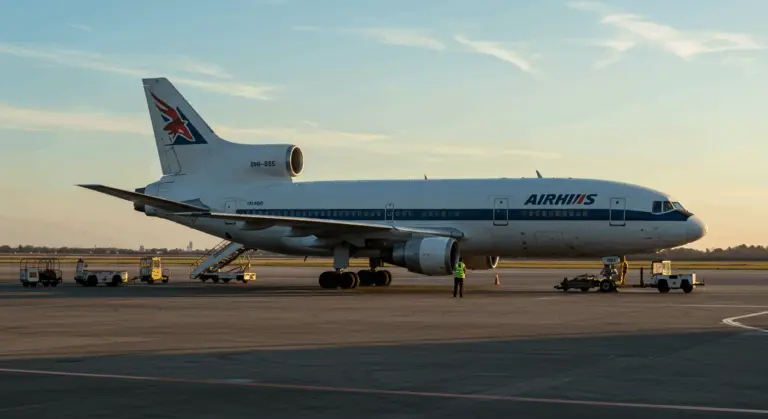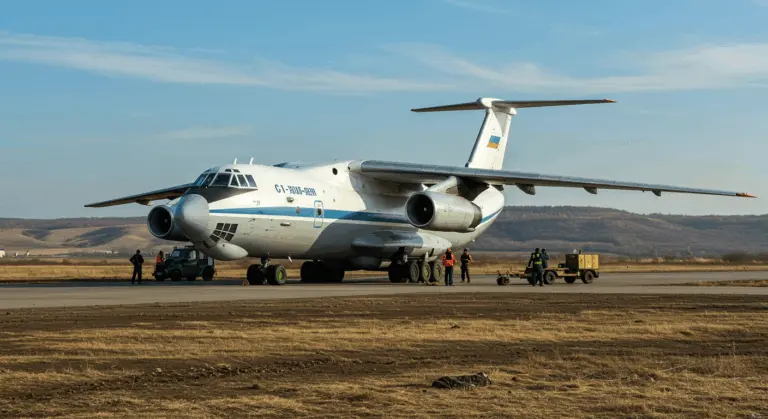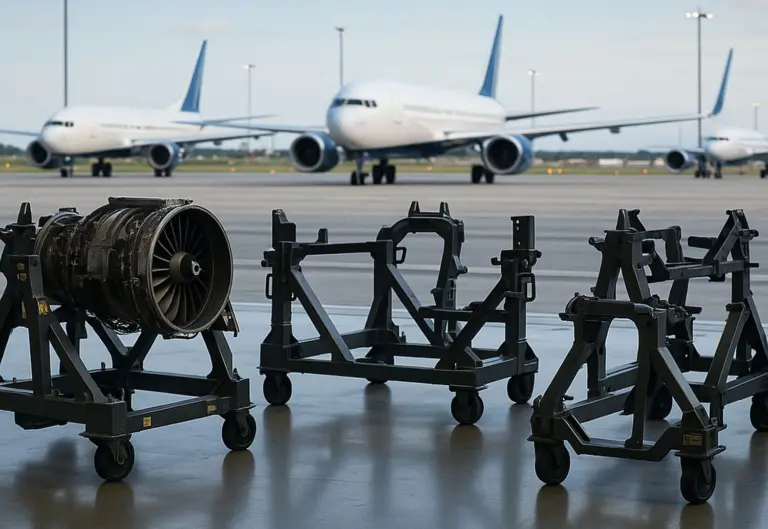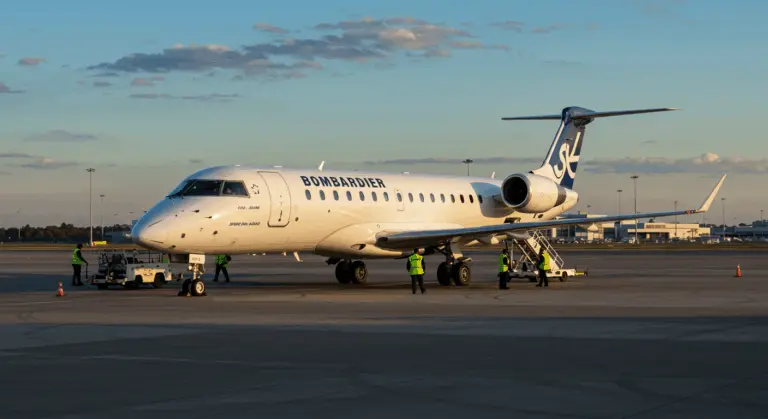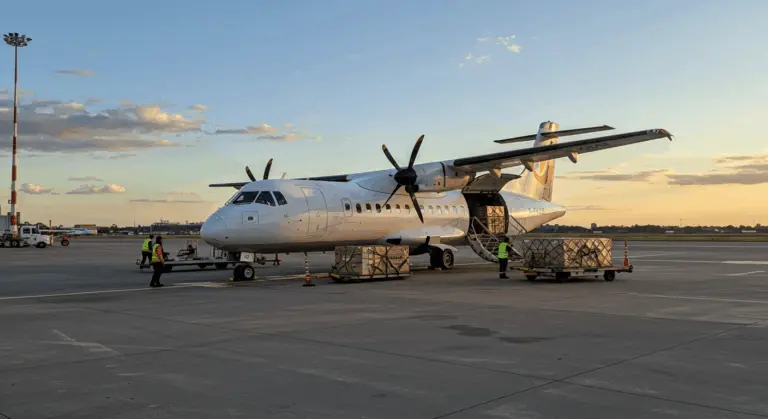Overview of the KC-135 Stratotanker
The Boeing KC-135 Stratotanker stands as the backbone of U.S. Air Force aerial refueling operations, with an unmatched six-decade service record in military aviation. This workhorse primarily refuels aircraft across all American military branches—Air Force, Navy, and Marine Corps—while extending its vital services to allied nations when operational needs demand.
The KC-135’s versatility extends far beyond fuel transfer. The aircraft excels in cargo transport and aeromedical evacuation missions, adapting to diverse operational requirements with remarkable flexibility. Its midair refueling capability transformed military aviation strategy, enabling aircraft to push beyond traditional range limitations and maintain persistent presence in distant theaters without the vulnerability of ground stops.
Development and History of the KC-135
The KC-135 Stratotanker’s lineage traces back to Boeing’s innovative 367-80 prototype—the legendary “Dash 80″—which shared its developmental DNA with the commercial Boeing 707. This parallel evolution forged the distinctive silhouette that would define both aircraft for generations. On August 31, 1956, the KC-135 took its maiden flight, heralding a transformative chapter in American aerial refueling doctrine.
Born from necessity to replace the aging propeller-driven KC-97 Stratofreighter, the KC-135 embodied a quantum leap into the jet age. Over decades of service, continuous modernization has kept this veteran relevant on the modern battlefield. The most transformative upgrade replaced original Pratt & Whitney J57 turbojets with advanced CFM International CFM-56 high-bypass turbofans, creating the KC-135R and KC-135T variants.
Key Milestones in Development
The aircraft’s developmental journey reached critical milestones with the prototype’s inaugural flight on August 31, 1956. Soon after, the first production model (tail number 55-3118) took to the skies, marking the pivotal transition from experimental concept to operational reality.
Design and Specifications
-
Length: 136 ft (41.5 m)
-
Wingspan: 130 ft (39.7 m)
-
Height: 38 ft (11.6 m)
-
Max Takeoff Weight: 322,500 lbs (146,300 kg)
-
Transferable Fuel (KC-135R): Up to 200,000 lbs (90,719 kg)
-
Cruise Speed: 530 mph (853 km/h)
-
Service Ceiling: 50,000 ft (15,200 m)
-
Range: Over 1,500 miles (2,419 km) with maximum fuel transfer
-
Engines: Four CFM-56 high-bypass turbofans
-
Thrust: 21,634 LBF per engine
-
Crew: 3 (pilot, co-pilot, boom operator)
The Stratotanker’s interior design prioritizes mission adaptability, accommodating up to 37,000 pounds of cargo on its main deck during dual-role configurations. The aircraft’s distinguishing feature is its exceptionally robust airframe—engineered with generous structural margins that have enabled decades of modifications while maintaining operational integrity far beyond original projections.
Refueling System and Capabilities
The KC-135’s refueling capability centers on its sophisticated flying boom system, masterfully controlled by a dedicated boom operator stationed at the aircraft’s tail. This precision-engineered mechanism can transfer virtually all internal fuel to receiver aircraft, providing exceptional operational flexibility.
When servicing aircraft equipped with probe-and-drogue systems rather than boom receptacles, the KC-135 transforms through a shuttlecock-shaped drogue adapter. This ingenious modification expands the Stratotanker’s compatibility to encompass Navy, Marine Corps, and allied aircraft fleets.
MRS-equipped variants deliver a 10–18% boost in mission efficiency through dual-aircraft refueling—a significant advantage during large-scale operations. This adaptability has established the KC-135’s reputation as the preferred platform for complex missions supporting both strategic bombers and tactical fighters.
Operational History and Roles
From its 1957 debut, the KC-135 became central to extended-range military operations. Throughout the tense Cold War decades, it maintained round-the-clock alert status alongside Strategic Air Command bombers, forming the backbone of America’s nuclear deterrent strategy.
Vietnam marked the Stratotanker’s baptism by fire. Here, KC-135s enabled marathon B-52 bombing campaigns and sustained tactical aircraft operations across Southeast Asia’s vast theater. This operational template would repeat through subsequent conflicts—Grenada, Panama, the Balkans—with the aircraft proving indispensable to American power projection.
Beyond warfare, the KC-135 fleet serves humanitarian causes, disaster relief operations, and global training exercises. Despite advancing age, this aircraft remains essential to American airpower’s global reach—a testament to enduring design excellence.
Significant Operations Involving KC-135
Throughout its distinguished service record, the KC-135 has proven instrumental in defining American air power projection capabilities. The Vietnam conflict (1965-1973) saw Stratotankers operating from Thailand, Okinawa, and the Philippines, creating an aerial lifeline that sustained B-52 operations from bases as distant as Guam and the continental United States.
Operation Desert Storm demonstrated the KC-135’s critical importance. Nearly the entire Stratotanker fleet mobilized to support coalition air operations against Iraq, enabling continuous air presence over hostile territory. Fighter missions routinely required multiple refueling to reach deep Iraqi targets, yet the tanker force maintained an extraordinary 98% mission completion rate despite challenging operational conditions.
In recent decades, KC-135s have anchored operations in Afghanistan and Iraq, supporting both kinetic strikes and intelligence-gathering missions. During Operations Enduring Freedom and Iraqi Freedom, Stratotankers enabled persistent air coverage, allowing fighters and bombers to loiter over operational areas while awaiting real-time tasking.
Variants of the KC-135
The KC-135 family has branched into several distinct variants, each tailored for specific operational requirements:
-
KC-135A: The original production model, powered by Pratt & Whitney J57 turbojet engines.
-
KC-135E: An interim upgrade featuring more fuel-efficient TF33 engines salvaged from retired 707 airliners.
-
KC-135R: The most substantial upgrade, incorporating CFM-56 turbofan engines. This modification increased fuel offload by 50%, reduced fuel consumption by 25%, and lowered noise levels by 96%.
-
KC-135T: A KC-135R variant, formerly the KC-135Q, specially configured to refuel the SR-71 Blackbird.
-
Specialized Airframes: The versatile airframe was adapted for other roles, including the RC-135 (reconnaissance), EC-135 (command post), WC-135 (atmospheric sampling), and OC-135B (observation).
Current Operators of the KC-135
The U.S. Air Force operates the KC-135 through a TRI-component structure spanning Active Duty, Air Force Reserve, and Air National Guard units. This distributed approach maximizes fleet availability—Active Duty units handle global operations while Reserve and Guard components focus on homeland defense and training missions.
Uniquely among major U.S. military aircraft, the KC-135 has never been exported, remaining exclusively in American service. While other nations operate tankers derived from similar commercial platforms, the KC-135’s specific configuration remains a uniquely American asset—highlighting its strategic importance to national defense.
Future of the KC-135 Stratotanker
The KC-135’s future unfolds through a carefully orchestrated transition as the Boeing KC-46 Pegasus gradually assumes refueling duties. Beginning with initial KC-46 deliveries in 2019, this modernization represents a generational shift in American aerial refueling capabilities. Yet the transition timeline extends well into the 2030s and potentially beyond, reflecting both the current fleet’s substantial size and the KC-135’s proven reliability despite advancing age.
Sustaining the KC-135 fleet during this extended transition requires comprehensive programs targeting structural integrity, avionics modernization, and age-related maintenance challenges. The aircraft’s remarkable durability—rooted in robust original design and continuous upgrades—has enabled service life extensions far exceeding initial projections.
While the KC-46 Pegasus embodies the future with advanced systems and enhanced multirole capabilities, the KC-135 Stratotanker’s legacy remains secure. Beyond operational achievements, this aircraft fundamentally shaped aerial refueling doctrine and established performance standards that continue guiding tanker development.

